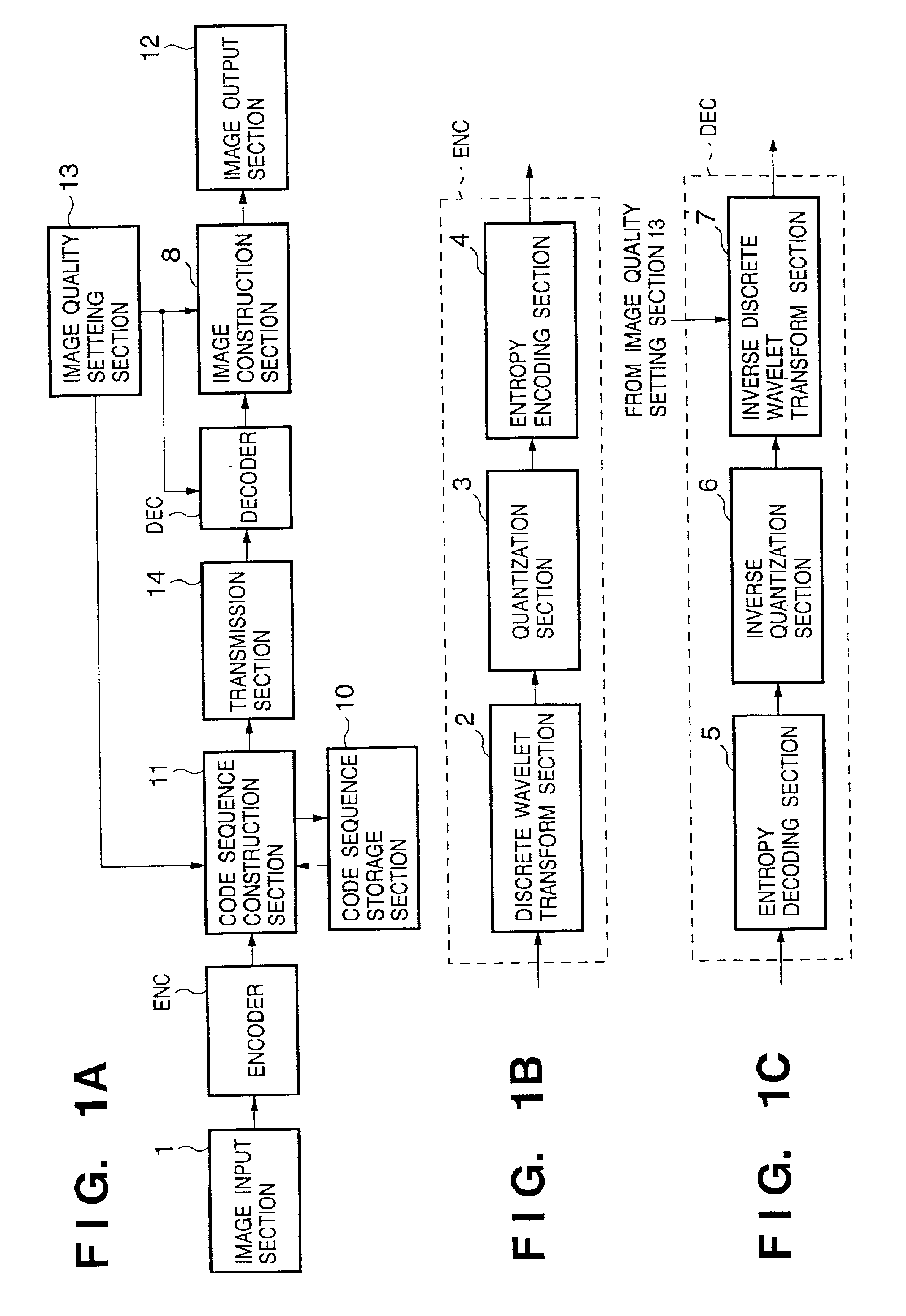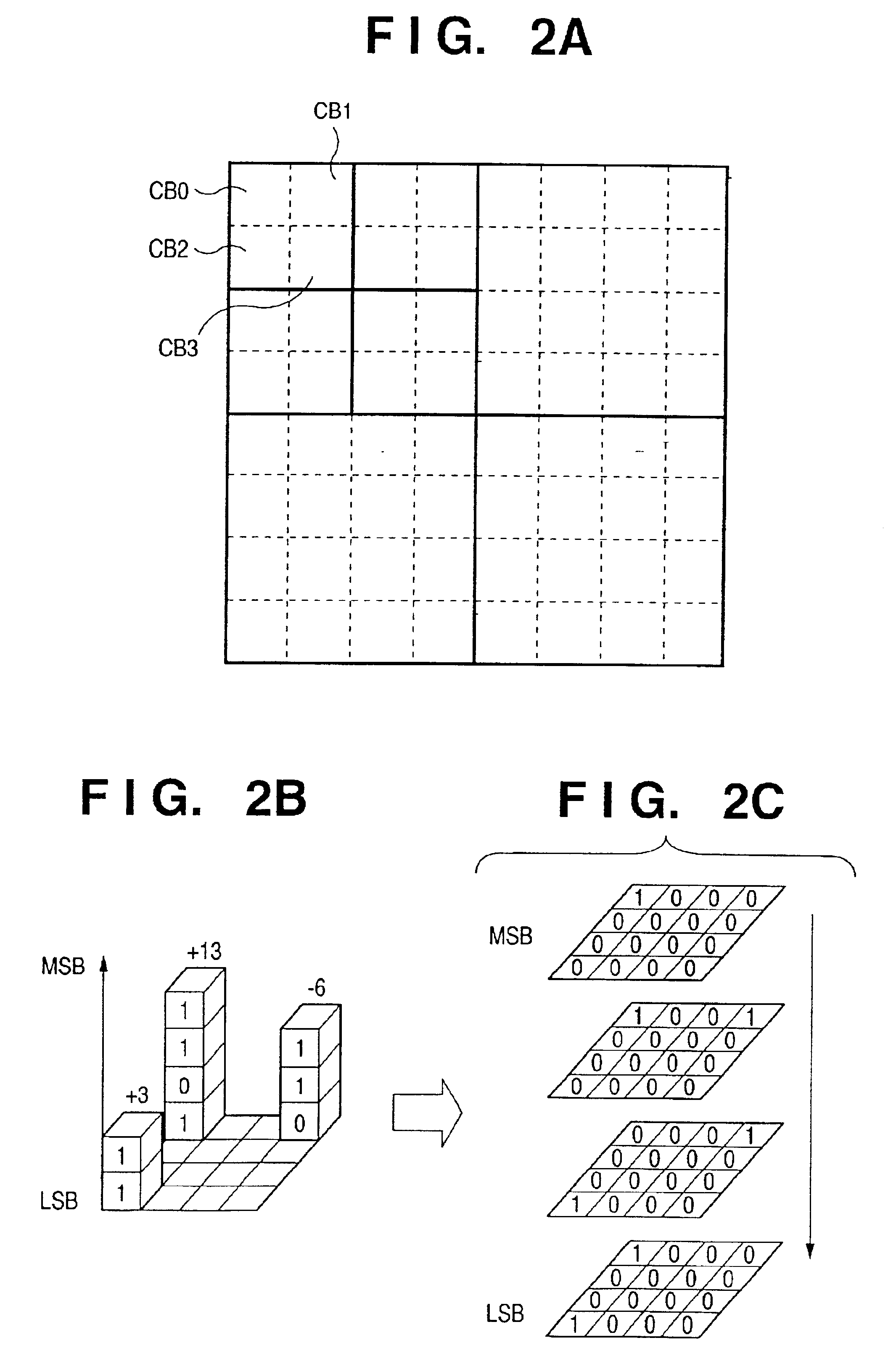Decoding bit-plane-encoded data using different image quality for display
- Summary
- Abstract
- Description
- Claims
- Application Information
AI Technical Summary
Benefits of technology
Problems solved by technology
Method used
Image
Examples
first embodiment
<First Embodiment>
FIGS. 1A to 1C are block diagrams of an image processing apparatus according to an embodiment of the present invention. An outline of operation of the image processing apparatus will be described first with reference to FIGS. 1A to 1C.
Referring to FIGS. 1A to 1C, an image input from an image input section 1 is compression-coded by an image encoder ENC. The generated code sequence is output to a code sequence construction section 11 on the output side. The code sequence construction section 11 constructs the received code sequence by a predetermined method and outputs it to a code sequence storage section 10 or transmission section 14. The code sequence construction section 11 also has a function of changing the structure of a code sequence stored in the code sequence storage section 10 and storing or transmitting the code sequence.
The code sequence storage section 10 is a storage medium such as a memory or hard disk for storing a compression-coded image. The c...
second embodiment
<Second Embodiment>
In the above-described first embodiment, the output code sequence is arranged in units of subbands. However, another arrangement may be employed. A case wherein a code sequence constructed by a code sequence construction section 11 has another form will be described below.
FIGS. 5A to 5E are views showing the structure of a code sequence by the code sequence construction section 11 according to this embodiment. The structures shown in FIGS. 5A to 5C are the same as in the first embodiment, and a detailed description thereof will be omitted. Referring to FIG. 5D, encoded data are put together in units of layers, and each layer contains a predetermined amount of encoded data in each subband.
The encoded data in each subband is formed from encoded data corresponding to a predetermined number of bit planes or encoding paths from the code block in the subband. Operation of each section in outputting an image when such a code sequence is formed will be described belo...
third embodiment
<Third Embodiment>
In the above-described first and second embodiments, the image is not segmented into tiles. However, the present invention is not limited to this, and an image may be segmented into a plurality of tiles. In addition, the output resolution set by the image quality setting section may be changed in units of tiles.
In the third embodiment, an image quality setting section 13 outputs both a display resolution and an output resolution to a code sequence construction section 11. The code sequence construction section 11 stores an image type of each tile in advance by a predetermined method and reconstructs the code sequence such that a code sequence with the output resolution is output for a predetermined tile, and a code sequence with the display resolution is output for the remaining tiles.
FIG. 4C is a view showing an output code sequence when an image is segmented into a plurality of tiles. Referring to FIG. 4C, in tiles 0 and 1, only encoded data of a subband LL ...
PUM
 Login to View More
Login to View More Abstract
Description
Claims
Application Information
 Login to View More
Login to View More - R&D
- Intellectual Property
- Life Sciences
- Materials
- Tech Scout
- Unparalleled Data Quality
- Higher Quality Content
- 60% Fewer Hallucinations
Browse by: Latest US Patents, China's latest patents, Technical Efficacy Thesaurus, Application Domain, Technology Topic, Popular Technical Reports.
© 2025 PatSnap. All rights reserved.Legal|Privacy policy|Modern Slavery Act Transparency Statement|Sitemap|About US| Contact US: help@patsnap.com



